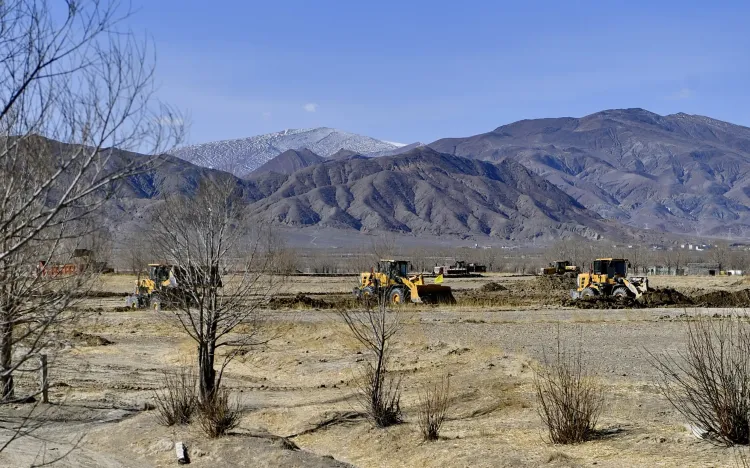Have 'Rising Dragon' Fireworks Left Scars on the Tibetan Plateau?

Synopsis
Key Takeaways
- The 'Rising Dragon' fireworks display has caused significant environmental damage in Tibet.
- The event highlights the clash between commercial interests and ecological preservation.
- Cultural insensitivity is a concern, given the sacred nature of Tibetan land.
- The Tibetan Plateau faces urgent environmental challenges due to climate change.
- Genuine protection of fragile ecosystems is vital for the future.
Beijing, Nov 3 (NationPress) The 'Rising Dragon' fireworks event in Tibet has resulted in lasting consequences that could echo for decades across the damaged grasslands of the Tibetan Plateau near Gyantse County. This occurrence highlighted significant contradictions between China’s claims of ecological civilization and the stark reality of exploitation; corporate greenwashing alongside environmental destruction; artistic expression clashing with cultural insensitivity; and the contrast between fleeting spectacles and enduring sustainability, according to a report released on Monday.
“On September 19 at exactly 4:30 pm, the remote Tibetan Plateau adjacent to Gyantse County in Shigatse experienced a display that would spark a wave of controversy, extending far beyond the 52-second visual it created. Set against the backdrop of the sacred Himalayan mountains, 1,050 fireworks exploded across the mountainside at altitudes ranging from 4,670 to 5,020 m, producing a dragon-shaped cascade of colorful smoke and flames,” as detailed in a report from Myanmar’s media outlet 'The Irrawaddy'.
“Named 'Rising Dragon', this fireworks display—a collaboration between the outdoor brand Arc’teryx and renowned Chinese artist Cai Guoqiang—was meant to serve as an artistic homage to the splendor of nature. However, it instead became a striking reminder of the vulnerable environmental state of the Tibetan Plateau and the escalating tensions between commercial spectacle and ecological accountability in one of Earth’s most delicate ecosystems,” the report added.
According to findings from the Shigatse Municipal Investigation Team in Tibet, nearly a month after the event, it was confirmed that this brief occurrence had harmed 30.06 hectares of grassland, damaging soil and turf structures due to flattening operations, human trampling, and vehicle movements. The report indicated that remnants of fireworks, plastic waste, and other materials were not properly cleared, while the intense flashes and loud sounds temporarily disturbed local wildlife.
Moreover, the report stated that beyond environmental harm, the incident inflicted profound cultural wounds on the Tibetan people, for whom the Himalayan mountains symbolize more than mere geographical entities; they are sacred homes of protective deities.
It noted that the use of dragon imagery, which is strongly linked to Chinese identity, on sacred Tibetan territory intensified the feelings of cultural insensitivity.
"As the Tibetan Plateau continues to warm at twice the global average, glaciers recede, permafrost thaws, grasslands degrade, and water security diminishes for billions downstream, the world cannot afford to treat this fragile ecosystem as a platform for publicity stunts or development illusions. The revered mountains of Tibet, home to protective deities in Tibetan cosmology and crucial water sources in hydrological reality, demand true protection—not fireworks tributes, but genuine safeguarding from those who profess to honor them," the report concluded.









